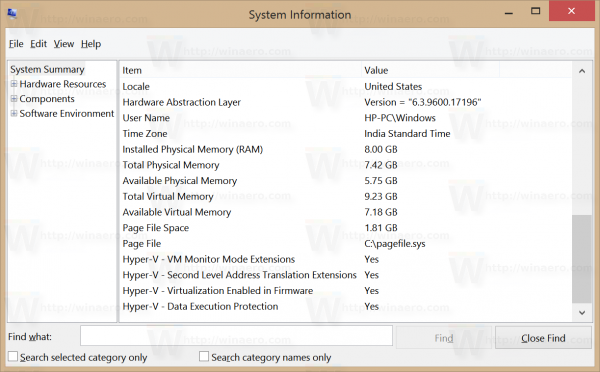How to check if your computer is running Windows 10 Hyper-V?
On Windows 10, Windows 8.1 and Windows 8 have added Client Hyper-V so you can run the guest operating system on the Virtual Machine. Hyper-V is Microsoft's hypervisor on Windows. It was originally developed for Windows Server 2008 and then supported by the Windows client operating system.
To use Hyper-V requires your computer to meet some requirements. In the following article, the network administrator will show you how to quickly check if your computer is running Hyper-V.
Check if your computer is running Windows 10 Hyper-V?
To check if your computer is running Windows 10 Hyper-V, follow the steps below:
1. Press the Windows + R key combination to open the Run command window.
2. On the Run command window, enter the following command and press Enter:
msinfo32
3. On the window that appears on the screen, find the options below and make sure that these options are set to Yes:
- VM Monitor Mode Extensions
- Second Level Address Translation Extensions
- Virtualization Enabled In Firmware
- Data Execution Prevention
If all of these options are set to Yes , it means that your Windows 10 or Windows 8.1 computer supports running Hyper-V.


Or alternatively, check on the Command Prompt window:
1. Open the Command Prompt window.
2. On the Command Prompt window, enter the command below and press Enter:
systeminfo
3. At the Hyper-V Requirements section , check the values: Second Level Address Translation, VM Monitor Mode Extension, Enabled In Firmware Virtualization, and whether Data Execution Prevention Available is set to Yes .
Refer to some of the following articles:
- Create virtual machines with Hyper-V on Windows 8 and Windows 10
- 3 ways to set up different background images on each Windows 10 screen
- Unusually high CPU error correction due to TiWorker.exe on Windows 10 / 8.1 / 8
Good luck!
You should read it
- How to import Hyper-V virtual machines in Windows 10
- Create virtual machines with Hyper-V on Windows 8 and Windows 10
- How to fix Hyper-V error 0x8009030E in Windows
- Create virtual machines in Hyper-V on Windows Server 2008
- Instructions for using Hyper-V on Windows 8 (Part 1)
- Instructions for installing Hyper-V
 Automatically 'clean up' the Recycle Bin on Windows 10
Automatically 'clean up' the Recycle Bin on Windows 10 How to fix 'An operating system not found' error on Windows 10 and Windows 8.1
How to fix 'An operating system not found' error on Windows 10 and Windows 8.1 What is the directory $ WINDOWS. ~ BT, can delete $ WINDOWS. ~ BT or not?
What is the directory $ WINDOWS. ~ BT, can delete $ WINDOWS. ~ BT or not? Fixing the error 'WiFi doesn't have a Windows 10 configuration IP validation'
Fixing the error 'WiFi doesn't have a Windows 10 configuration IP validation' Why is it disabled but Cortana still runs in the background?
Why is it disabled but Cortana still runs in the background? How to disable Lock Screen lock screen on Windows 10 Anniversary Update
How to disable Lock Screen lock screen on Windows 10 Anniversary Update